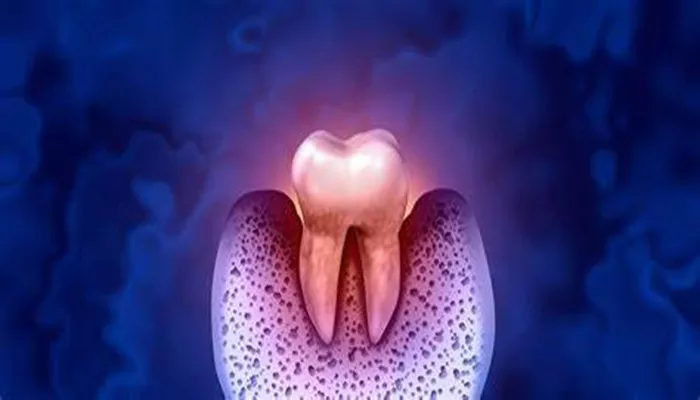Periodontal disease, commonly referred to as gum disease, is a chronic inflammatory condition that affects the supporting structures of the teeth. It is primarily caused by bacterial infections that lead to inflammation of the gums and surrounding tissues. Despite advancements in dental treatments, periodontal disease cannot be completely cured. Instead, it can only be managed through various therapeutic approaches. This article delves into the reasons why periodontal disease remains incurable, exploring its complexities, risk factors, treatment challenges, and the importance of ongoing management.
The Nature of Periodontal Disease
Chronic Condition
Periodontal disease is characterized by its chronic nature. Unlike acute conditions that can often be resolved completely with treatment, chronic diseases persist over time and require continuous management. In the case of periodontal disease, inflammation and destruction of the gum tissue and bone can occur over many years, often without noticeable symptoms until significant damage has occurred.
Bacterial Etiology
The primary cause of periodontal disease is bacterial infection. These bacteria form biofilms on the teeth and gums, leading to plaque accumulation. If not effectively removed through proper oral hygiene practices, plaque can harden into tartar, which further exacerbates the condition. The bacteria produce toxins that trigger an inflammatory response in the body, leading to tissue destruction. While treatments like scaling and root planing can remove these bacteria, they cannot eliminate them entirely from the oral cavity.
Contributing Factors to Disease Progression
Multiple Risk Factors
Several systemic and environmental factors contribute to the progression of periodontal disease. These include:
Genetic Predisposition: Some individuals are genetically more susceptible to periodontal disease due to inherited immune responses.
Smoking: Tobacco use has been shown to significantly increase the risk and severity of periodontal disease while also impairing healing after treatment.
see also: Can Listerine Stop Periodontitis?
Diabetes: Poorly controlled diabetes can exacerbate periodontal disease by impairing blood flow and immune response.
Stress: Psychological stress can negatively impact oral health by affecting immune function and increasing inflammation.
Poor Oral Hygiene: Inadequate brushing and flossing allow plaque buildup, leading to gum disease.
These factors create a complex interplay that makes it challenging to manage periodontal disease effectively. Even with treatment, if these risk factors are not addressed, the disease may continue to progress.
Treatment Challenges
Incomplete Removal of Bacteria
One of the significant challenges in treating periodontal disease is the difficulty in completely removing all bacteria from deep periodontal pockets. As pocket depths increase, it becomes increasingly difficult to reach all areas where bacteria reside. Even with advanced techniques such as scaling and root planing or surgical interventions, some bacteria may remain undetected or inaccessible.
Variability in Patient Response
Patients respond differently to treatment based on various factors including their overall health, adherence to oral hygiene practices, and presence of systemic conditions such as diabetes or autoimmune disorders. Approximately 20%–30% of patients do not respond favorably to conventional treatments due to these variables. This variability complicates treatment plans and outcomes.
Long-term Management Strategies
Supportive Periodontal Therapy (SPT)
After initial treatment for periodontal disease, patients typically enter a phase known as supportive periodontal therapy (SPT). This involves regular dental check-ups and cleanings aimed at maintaining gum health and preventing disease recurrence. SPT is crucial because even after successful initial treatment, there remains a risk for relapse if proper maintenance is not followed.
Patient Compliance
Successful management of periodontal disease heavily relies on patient compliance with recommended oral hygiene practices. This includes daily brushing and flossing, as well as attending regular dental appointments for professional cleanings. Education about proper techniques and motivation are essential components in ensuring patients adhere to their oral care routines.
The Role of Advanced Treatments
While there is no cure for periodontal disease, various advanced treatments can help manage it effectively:
Surgical Interventions: For advanced cases, surgical options such as flap surgery or bone grafting may be necessary to remove deep-seated tartar or regenerate lost bone structure.
Antibiotic Therapy: Systemic or localized antibiotics may be used as adjuncts to mechanical therapy in certain cases where bacterial infection persists despite standard treatments.
Laser Therapy: Some practitioners utilize laser therapy to target diseased tissue while minimizing damage to surrounding healthy tissue. However, this method may not be universally effective for all patients.
Despite these advanced options, they do not equate to a cure but rather serve as methods for managing the condition.
Conclusion
In summary, periodontal disease remains an incurable condition due to its chronic nature and multifactorial etiology. The persistent presence of pathogenic bacteria combined with individual risk factors complicates effective treatment. While various therapies exist that can significantly improve gum health and prevent further deterioration, ongoing management through supportive care and patient compliance is essential for maintaining results.
Related topics:

